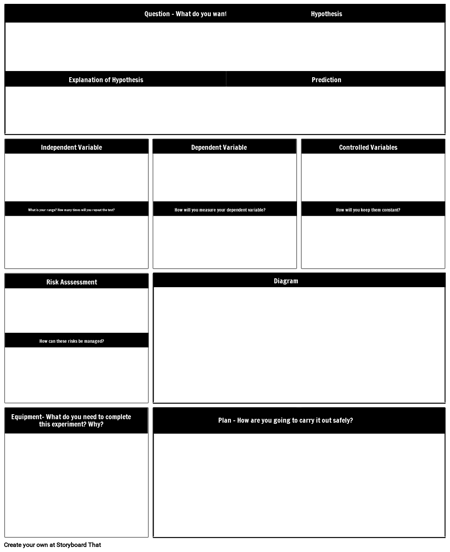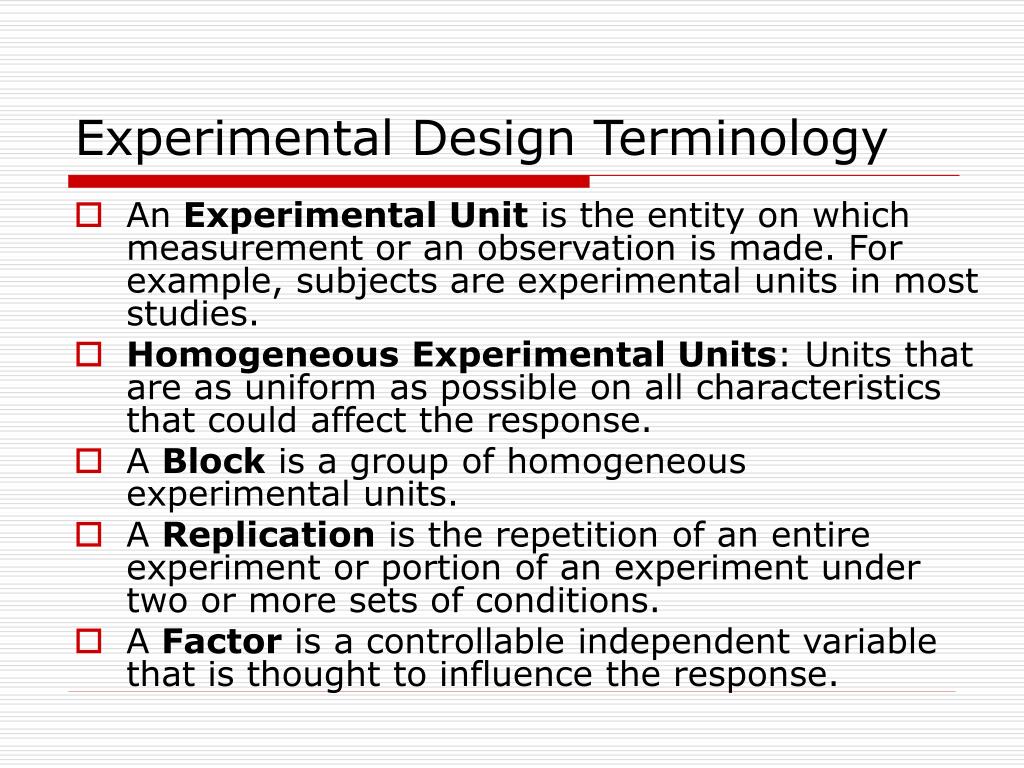Table Of Content

Cluster analysis is used to group similar cases or observations together based on similarities or differences in their characteristics. To assess the difference in reading comprehension between 7 and 9-year-olds, a researcher recruited each group from a local primary school. They were given the same passage of text to read and then asked a series of questions to assess their understanding. Repeated Measures design is also known as within-groups or within-subjects design. In a Field Experiment, they might change the school's daily schedule for one semester and keep track of how students perform compared to another school where the schedule remained the same. Secondly, it's useful when resources are limited and it's not feasible to roll out a new treatment to everyone at once.
Sports Nutrition Bars Study
In a study of the effects of colors and prices on sales of cars, the factors being studied are color (qualitative variable) and price (quantitative variable). Experimental research is suitable for research whose goal is to examine cause-effect relationships, e.g. explanatory research. It can be conducted in the laboratory or field settings, depending on the aim of the research that is being carried out. Formplus is the best tool for collecting experimental data using surveys. It has relevant features that will aid the data collection process and can also be used in other aspects of experimental research. Surveys can be shared with the respondents both physically and electronically.
Field Experiments
When done using true experimental design, causality can be infered, which allows researchers to provide proof that an independent variable affects a dependent variable. This is necessary in just about every field of research, and especially in medical sciences. The true experiment uses random selection/assignment of participants in the group to minimize preexisting differences between groups. It allows researchers to make causal inferences about the influence of independent variables. This is the factor that makes it different from other research designs like correlational research. The purpose of experimental design is to control and manipulate one or more independent variables to determine their effect on a dependent variable.
Step 5: Measure your dependent variable

We will address both by finding designs that are optimal for regression parameter estimation as well as designs optimal for prediction precision. Experimental research design provides researchers with a controlled environment to conduct experiments that evaluate cause and effect. A company in the product development phase creates multiple prototypes for testing. With a randomized selection, researchers introduce each test group to a different prototype. You should be able to create groups with an equal number of subjects and include subjects that match your target audience.
Improving reproducibility in animal research by splitting the study population into several 'mini-experiments' Scientific ... - Nature.com
Improving reproducibility in animal research by splitting the study population into several 'mini-experiments' Scientific ....
Posted: Tue, 06 Oct 2020 07:00:00 GMT [source]
Pretest-Posttest Design Cons
In this article, we will not only discuss the key aspects of experimental research designs but also the issues to avoid and problems to resolve while designing your research study. An experimental research design helps researchers execute their research objectives with more clarity and transparency. True experiments focus on connecting the dots between two or more variables by displaying how the change in one variable brings about a change in another variable. It can be as small a change as having enough sleep improves retention or as large scale as geographical differences affect consumer behavior.
Experimental research designs are often considered to be the standard in research designs. This is partly due to the common misconception that research is equivalent to scientific experiments—a component of experimental research design. In experimental research, the researcher can control and manipulate the environment of the research, including the predictor variable which can be changed. On the other hand, non-experimental research cannot be controlled or manipulated by the researcher at will. It measures and observes the variables of interest without changing existing conditions.
What is important to note about the difference between confounding and lurking variables is that a confounding variable is measured in a study, while a lurking variable is not. These variables were not measured in the study but could influence smoking habits as well as mortality rates. The explanatory variable explains a response, similar to a child falling and skins their knee and starting to cry.
Best Practices for Conducting Market Research with Survey Software
Think of Sequential Design as the nimble athlete of experimental designs, capable of quick pivots and adjustments to reach the finish line in the most effective way possible. But just like an athlete needs a good coach, this design requires expert oversight to make sure it stays on the right track. However, this design can be complex to analyze because it has to account for both the time factor and the changing conditions in each 'step' of the wedge. And like any study where participants know they're receiving an intervention, there's the potential for the results to be influenced by the placebo effect or other biases. In a Stepped Wedge Design, all participants or clusters start off in the control group, and then, at different times, they 'step' over to the intervention or treatment group. This creates a wedge-like pattern over time where more and more participants receive the treatment as the study progresses.
The results indicate the women responded much better to the apps than males and showed lower stress levels on both measures. Will the type of movie a person watches affect the likelihood that they donate to a charitable cause? To answer this question, a researcher decides to solicit donations at the exit point of a large theatre. Before commencing with the actual study, pre-tests are to be carried out wherever necessary. These pre-tests take an assessment of the condition of the respondent so that an effective comparison between the pre and post-tests reveals the change brought about by the research.
The participants are always on the lookout to identify the purpose and criteria for assessment. Pre-test conveys to them the basis on which they are being judged which can allow them to modify their end responses, compromising the quality of the entire research process. This is one of the main limitation why open-field research is preferred over lab research, wherein the researcher can influence the study.
It's a favorite in educational and psychological research where you really want to dig deep and figure out what's actually causing changes. Companies often use this approach to figure out how different factors—like price, packaging, and advertising—affect sales. By studying multiple variables at once, they can find the best combination to boost profits. Well, sometimes it's just not practical to assign conditions at the individual level. For example, you can't really have half a school following a new reading program while the other half sticks with the old one; that would be way too confusing! Cluster Randomization helps get around this problem by treating each "cluster" as its own mini-experiment.
If if random assignment of participants to control and treatment groups is impossible, unethical, or highly difficult, consider an observational study instead. Experimental design refers to how participants are allocated to different groups in an experiment. Types of design include repeated measures, independent groups, and matched pairs designs. In Factorial Design, researchers are not satisfied with just studying one independent variable.
Instead of relying on one study, you're looking at the whole landscape of research on a topic. Meta-Analysis is the process of fitting all those pieces together to see the big picture. If other designs are all about creating new research, Meta-Analysis is about gathering up everyone else's research, sorting it, and figuring out what it all means when you put it together. They can't tell you how things change or why they're changing, just what's happening right now.
On the plus side, it provides really robust results because it accounts for so many variables. Imagine you're a coach trying to figure out the best strategy to win games. You wouldn't just look at how many points your star player scores; you'd also consider assists, rebounds, turnovers, and maybe even how loud the crowd is. A Multivariate Design would help you understand how all these factors work together to determine whether you win or lose. With so many variables, it can be tough to tell which ones are really making a difference and which ones are just along for the ride.
In unconstrained settings where a classical design would be appropriate, optimal designs often turn out to be the same as their traditional counterparts. It is best that a process be in reasonable statistical control prior to conducting designed experiments. Investigators should ensure that uncontrolled influences (e.g., source credibility perception) do not skew the findings of the study.

No comments:
Post a Comment